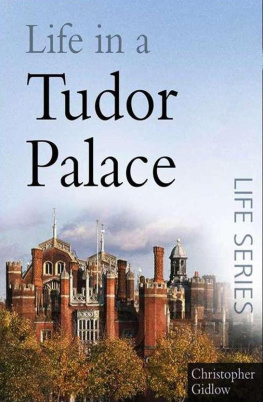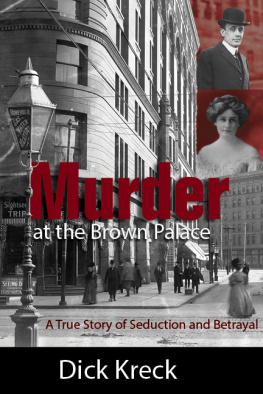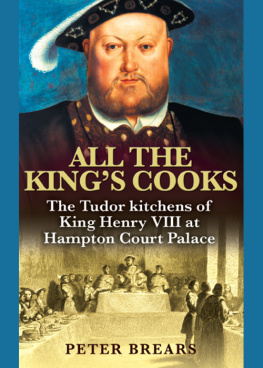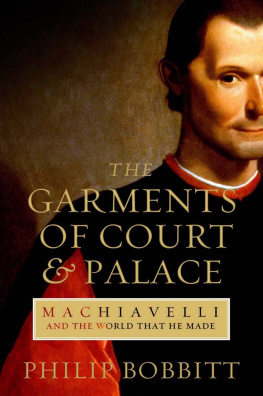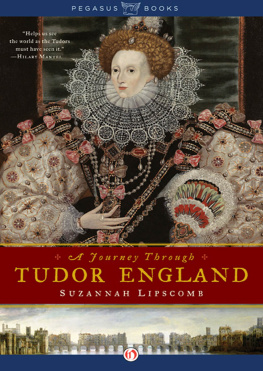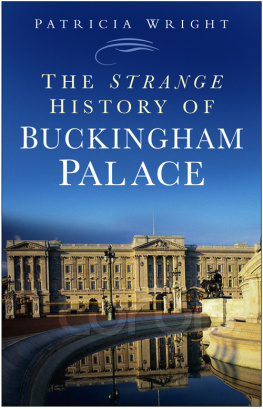Life in a Tudor Palace Life in a Tudor Palace
Christopher Gidlow

First published in 2007
The History Press
The Mill, Brimscombe Port
Stroud, Gloucestershire, GL5 2QG
www.thehistorypress.co.uk
This ebook edition first published in 2011
All rights reserved
Christopher Gidlow, 2007, 2011
This ebook is copyright material and must not be copied, reproduced, transferred, distributed, leased, licensed or publicly performed or used in any way except as specifically permitted in writing by the publishers, as allowed under the terms and conditions under which it was purchased or as strictly permitted by applicable copyright law. Any unauthorised distribution or use of this text may be a direct infringement of the authors and publishers rights, and those responsible may be liable in law accordingly.
Christopher Gidlow has asserted the moral right to be identified as the author of this work.
EPUB ISBN 978 0 7524 7061 0
MOBI ISBN 978 0 7524 7062 7
Original typesetting by The History Press
Contents
CHAPTER 1
Introduction
T he reign of King Henry VIII was one of the great dramas of English history. As often as not this drama was played out on the magnificent stage provided by his palaces.
By inheritance, confiscation and construction, King Henry amassed some sixty residences, of which two-thirds were in regular use. They ranged from ancient castles (Windsor and the Tower of London), rambling hunting lodges (Woodstock) and glorified manor houses (Eltham), to newly constructed Tudor palaces such as those at Nonsuch, Hampton Court and Whitehall.
Among these many residences seven stood out, the so-called Great Houses, at Greenwich, Westminster/Whitehall, Hampton Court, Woodstock, Richmond, Eltham and Beaulieu. It is on life in these Tudor palaces that this book focuses.
These palaces were symbols of Henry VIIIs power and magnificence, and also practical bases from which he could govern the kingdom while enjoying his favourite pastimes. They were residences, too, of the extensive Tudor Court. The court existed to serve the king, from the gong-scourers who cleaned out the toilets, to the Lord Great Master, one of the highest nobles in the land.
The palaces of Tudor England have all but vanished, victims of accidental fires or changes in taste. The Great Halls of Eltham and Westminster, already old in Henrys time, still stand, if in much altered surroundings. Only at Hampton Court do substantial remnants of the main apartments, courtiers lodgings and the kitchens that served them survive to be visited. Even here, the private chambers of the king and his family have vanished.
For evidence, we must search the account books, which record the vast expenditure lavished on the buildings and the food and wages of those who worked within. Detailed inventories of the palaces taken on Henrys death offer tantalising glimpses of the mundane and the magnificent objects that filled them. Additionally, ambassadors and courtiers themselves left accounts, which illuminate life within the walls.
We have one very significant piece of information on how a Tudor palace functioned. In 1527, King Henry VIII and his Council (which in practice meant his all-powerful Lord Chancellor, Cardinal Thomas Wolsey) issued the Eltham Ordinances. These were detailed rules for the establishment of good order and reformation of sundry errors and misuses in the court.
The Ordinances, in a bound volume, signed by the king, were kept in the Compting House, the office of the palace accountants. Here they could be consulted regularly by the head officers of the chamber and household. The councillors would make quarterly inspections of the palaces to ensure the Ordinances were being kept.
These Ordinances provide an invaluable record of how the meticulously minded cardinal wanted the court to function, with the minimum of mistakes and unnecessary waste. In reality, the court was dynamic and fluid, dominated by the changing whims of the largerthan-life monarch and the personalities who surrounded him. The great cardinal himself lost power barely two years after the Ordinances were drawn up. We can see in them, however, both the theory he had tried to impose and the problems that could arise to challenge it.
We shall follow King Henry VIII and his court through a typical day at a Tudor palace, between the publication of the Ordinances at Eltham Palace in 1527 and his death at Westminster/Whitehall Palace in 1547. In practice there was no such thing as a typical day over that period, which encompassed six wives, the fall and execution of numerous ministers, a split with Rome and the physical degeneration of an ageing, ailing monarch. We shall imagine, though, a day that was not a particular feast day, one without any specific great business to attend to or important visitors to be received; a very ordinary day, of which most of the history of the time must have been composed.
CHAPTER 2
The Tudor Court
T he way a Tudor palace worked derived from the much simpler pattern of noble life in the Middle Ages. The main building used by a medieval noble was the Great Hall. This was used for public life, eating and as a place where servants could sleep. At the back of the hall would be a separate room, a chamber, in which the lord would sleep, conduct private business and be entertained. At the opposite end you would find separate kitchens, stables and stores.
The hall and its dependencies were the responsibility of the Steward, while the chamber was the domain of the Chamberlain.
This traditional structure continued, in a magnified and more complex form, in the Tudor palaces. Here, the Lord Steward presided over the household, the Great Hall and the departments necessary to its functioning, while the Lord Chamberlain looked after the chamber, aspects of the kings private life as well as his actual bedroom.
The buildings where the court resided were largely incidental. The structure remained the same, whatever its physical surroundings. The king travelled from residence to residence. His favourite palace was Greenwich. Business kept him at Westminster or the neighbouring Whitehall for much of the year, and Windsor Castle was his principal residence outside London. Next in favour came the newly built Hampton Court Palace.
The court arrives
The Tudor palaces were massive complexes, which dominated their surrounding areas. Towers, pinnacles, chimneys and vanes signalled their presence from afar.
The first warning that the king was on his way would be the harbingers galloping into view. Led by the knight harbinger, these men were responsible for preparing the kings arrival and assigning lodgings for the courtiers who accompanied him. Shortly afterwards, the gentlemen ushers and yeoman ushers would arrive.
The harbingers and ushers had with them a book, signed by the king,describing the number of every person, of what estate, degree or condition he be who was allowed to lodge in or around the palace. They were ordered, on pain of losing their offices, not to give lodgings to anyone else unless directed by the king or council. If there were more courtiers than the palace could accommodate, local householders might be compelled to offer hospitality. The ushers would take note of what items were left in the lodging and take charge of the keys. Householders were paid double compensation for any losses caused by thoughtless young nobles making free with their property.
The palaces had abiding households that looked after them while the king was elsewhere. Although it was possible for the court to arrive unexpectedly, in practice its movements were fairly regular. The king tended to stay in Whitehall for the law terms, when Parliament sat. Itineraries were worked out in advance, with the court moving every few weeks in summer. In the winter, it might move even more frequently, except when hindered by the weather. Even the best plans could be thrown into disarray by an outbreak of plague, forcing it to move swiftly to a more healthy location.
Next page
